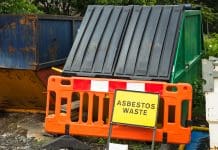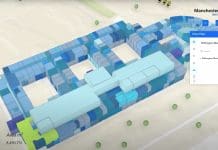Terry Slater, Director of SMH Training & Scientific Services UK LTD highlights the dangers of construction dust and solutions to reduce the risks
An estimated 5.5 million workers are exposed each year to hazardous gases, vapours, and airborne particles, and many of these workers are from the construction industry. The HSE has identified three main types of construction dust:
- Silica dust – Respirable Crystalline Silica, or RCS, is very fine silica often released during cutting, drilling and grinding of materials like sand, sandstone and granite, as well as concrete and mortar;
- Wood dust – Working with wood or wood-based products, such as MDF and chipboard, is a common task on construction sites, but the dust produced can be harmful;
- Non-silica dust – Something of a catch-all for other dusts found in construction, this can be produced when working with products such as gypsum, cement, limestone and marble.
Other airborne particles that construction workers could be exposed to include:
- Asbestos fibres – Banned from use in the UK since 1999, asbestos removal is heavily regulated to control the risks of exposure to this hazardous particle which is found in many older buildings being demolished of refurbished;
- Lead dust, fumes or vapours – Stripping old lead paint is one way in which workers in construction could be exposed to this toxic element.
It’s a dusty job, but someone has to do it
All too often, dusty work in construction is unavoidable. However, there are several simple ways in which a construction worker’s exposure to it can be limited:
- Before the work, training can ensure that workers understand the risks of exposure to construction dust and the appropriate controls to protect themselves and their colleagues. Methods of working can be adapted to reduce the levels of dust created, including using different materials or different types of tools;
- During the work, control measures such as on-tool extraction and water suppression can stop dust before it gets into the air. Using the appropriate PPE and RPE can protect workers. Choosing, properly fitting and using the appropriate RPE can reduce the amount breathed in. Many types can also be harmful to the skin, so PPE such as disposable coveralls can also be an important control measure;
- After the work, properly disposing of contaminated RPE and PPE can reduce the risk of construction dust being carried off-site and contaminating workers’ homes and other public spaces, and in some cases, such as after the removal of asbestos containing materials, decontamination facilities such as showers are a necessary step.
Why take the risk?
It is estimated that there are currently approximately 12,000 deaths each year due to occupational respiratory diseases, including cancers, asthma, COPD, allergies and sensitisation, and silicosis, and many of these will be attributable to construction dust. The health problems associated with breathing in construction dusts can be slow to manifest, but are often debilitating or even fatal. Even short durations of exposure can add up over years of construction work, so it is vital that all exposure is carefully managed and workers are protected from breathing in any potentially harmful dusts.
Sources:
www.hse.gov.uk, especially www.hse.gov.uk/statistics/causdis/respiratorydiseases.pdf and www.hse.gov.uk/pubns/cis36.pdf.
www.citb.co.uk/health-safety-and-other-topics/health-safety/construction-dust-partnership/
Terry Slater
Director
SMH Training & Scientific Services UK LTD
Tel: 0191 456 6000













